How to grow tradescantia – the indoor plant with vivid and unusual foliage
This easy-to-grow indoor plant ticks all the boxes, showcasing a range of vivid foliage colors, textures and patterns
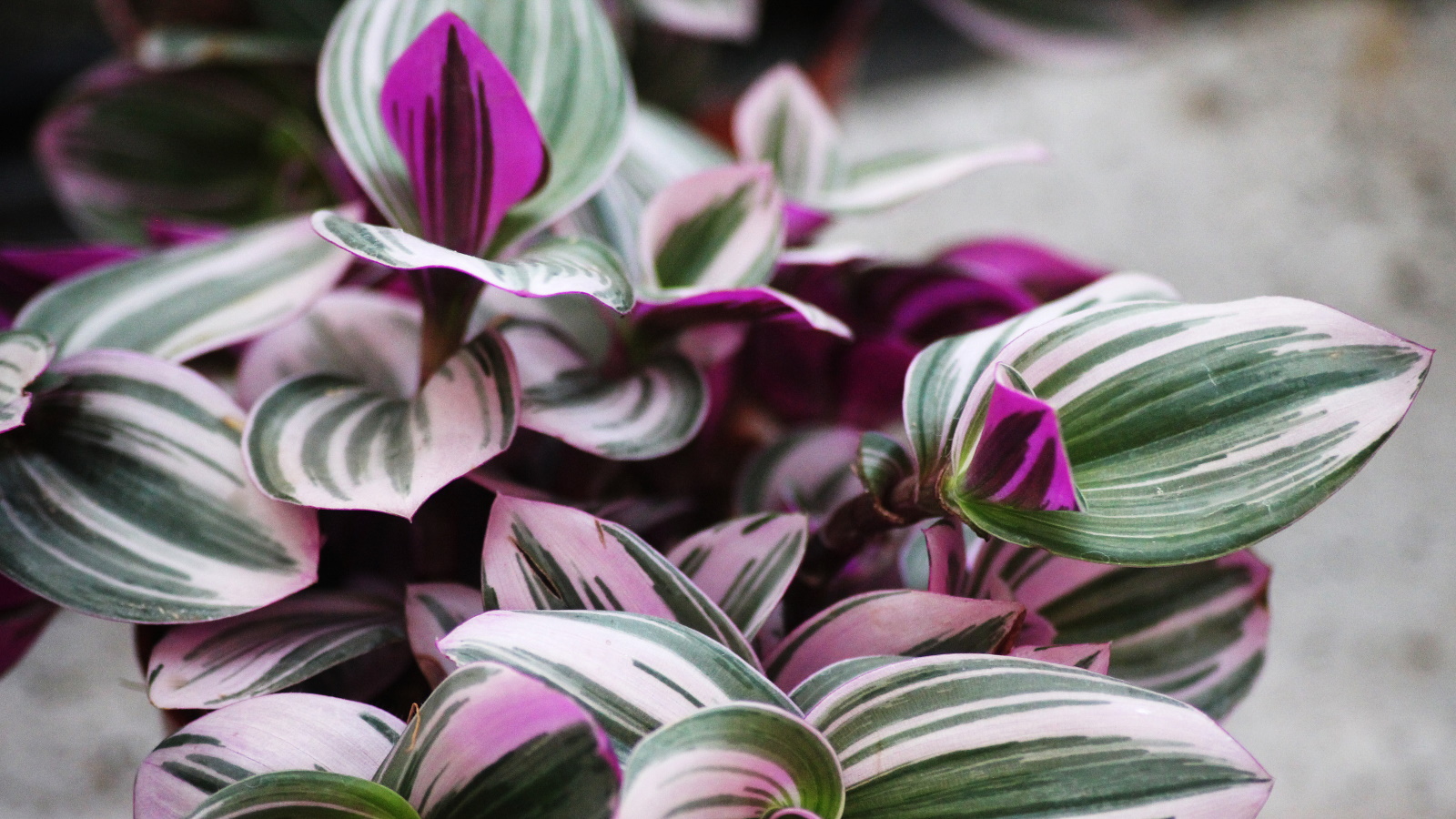

Tradescantia have become popular indoor plants, largely because of the adaptability and versatility of this genus. There are 85 known species, many of which are suitable to grow indoors.
Commonly known as spiderwort plants, tradescantia are native to the Americas but are named after the Tradescant family, renowned English plant hunters and gardeners in the 17th century.
Tradescantia plants were eventually brought into indoor spaces due to their adaptability, known for tolerating various light conditions. They are also incredibly low-maintenance plants, considered fast-growing and requiring minimal attention.
Today, tradescantia are popular plant options for indoor gardens. They have become a favorite choice for plant collectors, celebrated as a unique species that showcases something of the unusual, often seen with variegated foliage or purple and pink leaves. One popular option is Tradescantia albiflora 'Nanouk', available from Walmart, with purple and green foliage that is sure to attract attention.
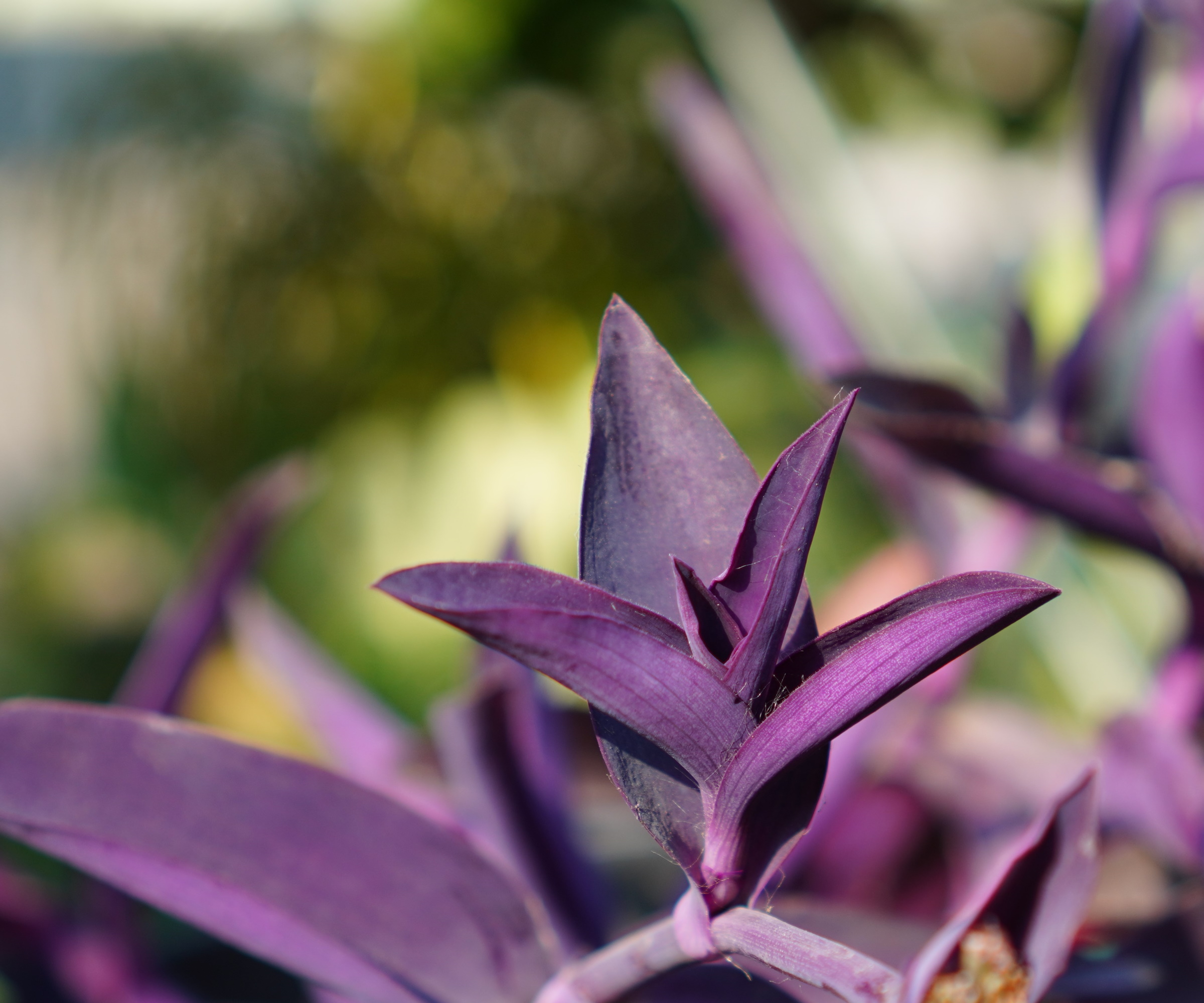
How to grow tradescantia
Caring for tradescantia plants is relatively straightforward, and by following a few simple guidelines, your indoor garden will thrive.
1. Place your plant in indirect light
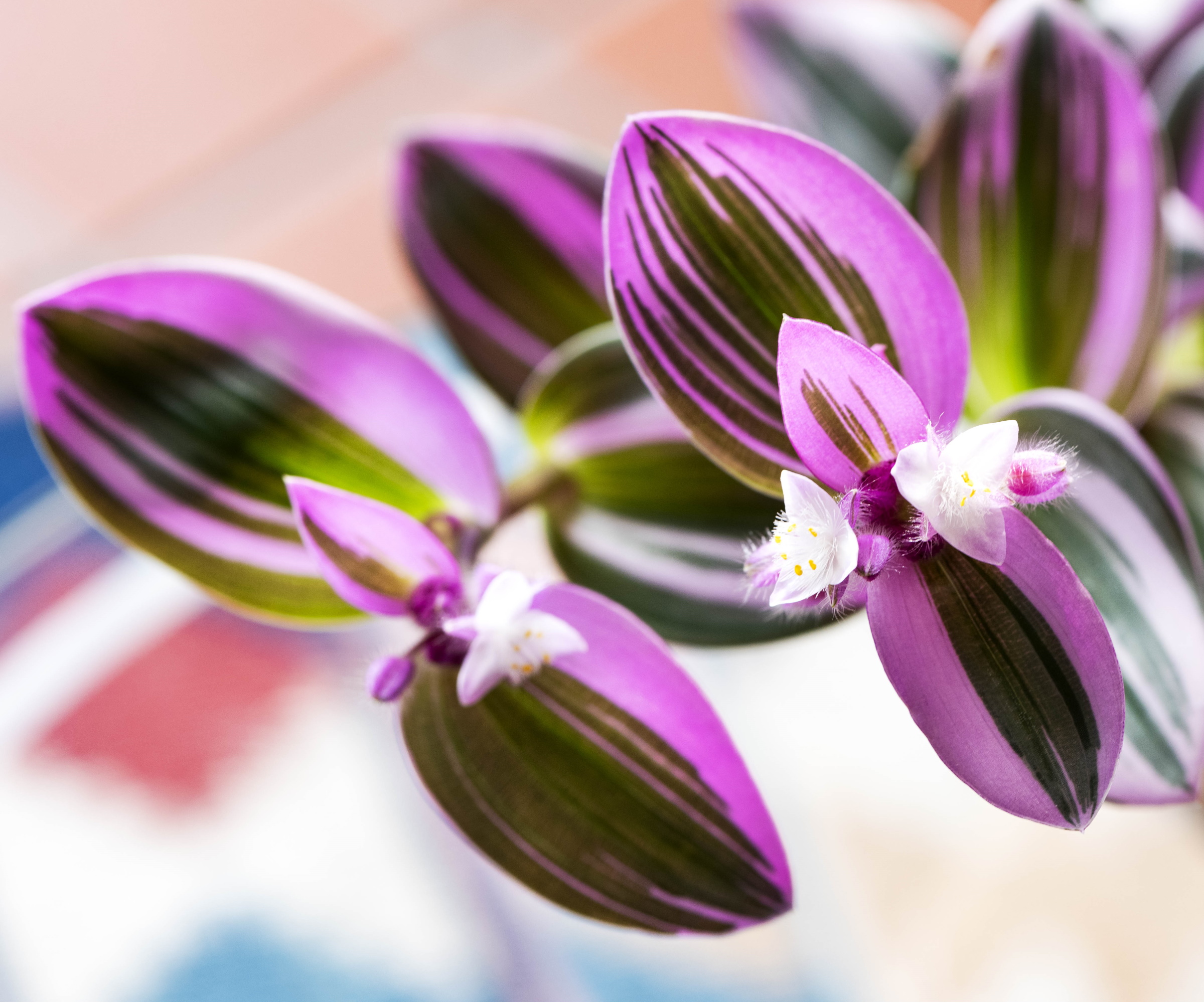
Tradescantia plants tend to prefer bright, indirect light but can tolerate low-light conditions. 'I find they do best in indirect light, whether indoors or outdoors,' says Val Esquivel, indoor plant expert and owner of Plantitas Verdes.
'Indoors, I recommend a sunny spot, with bright indirect light such as a south or west-facing window,' Val continues. Too much direct sunlight can scorch tradescantia leaves, which is something to remember when placing your new plant.
Once you find the right spot in your home with the ideal conditions, your tradescantia plants will quickly grow. 'These plants are pretty easy to grow indoors,' Val says. 'They have a natural trailing growth habit, and so they look great on shelves, a pedestal, or in places where you can appreciate their trailing leaves.'

Valerie Esquivel is an indoor plant expert and owner of Plantitas Verdes, the Los Angeles-based plant design studio, founded in 2021 with a mission to transform spaces with plants by fusing art and nature.
2. Ensure consistent watering
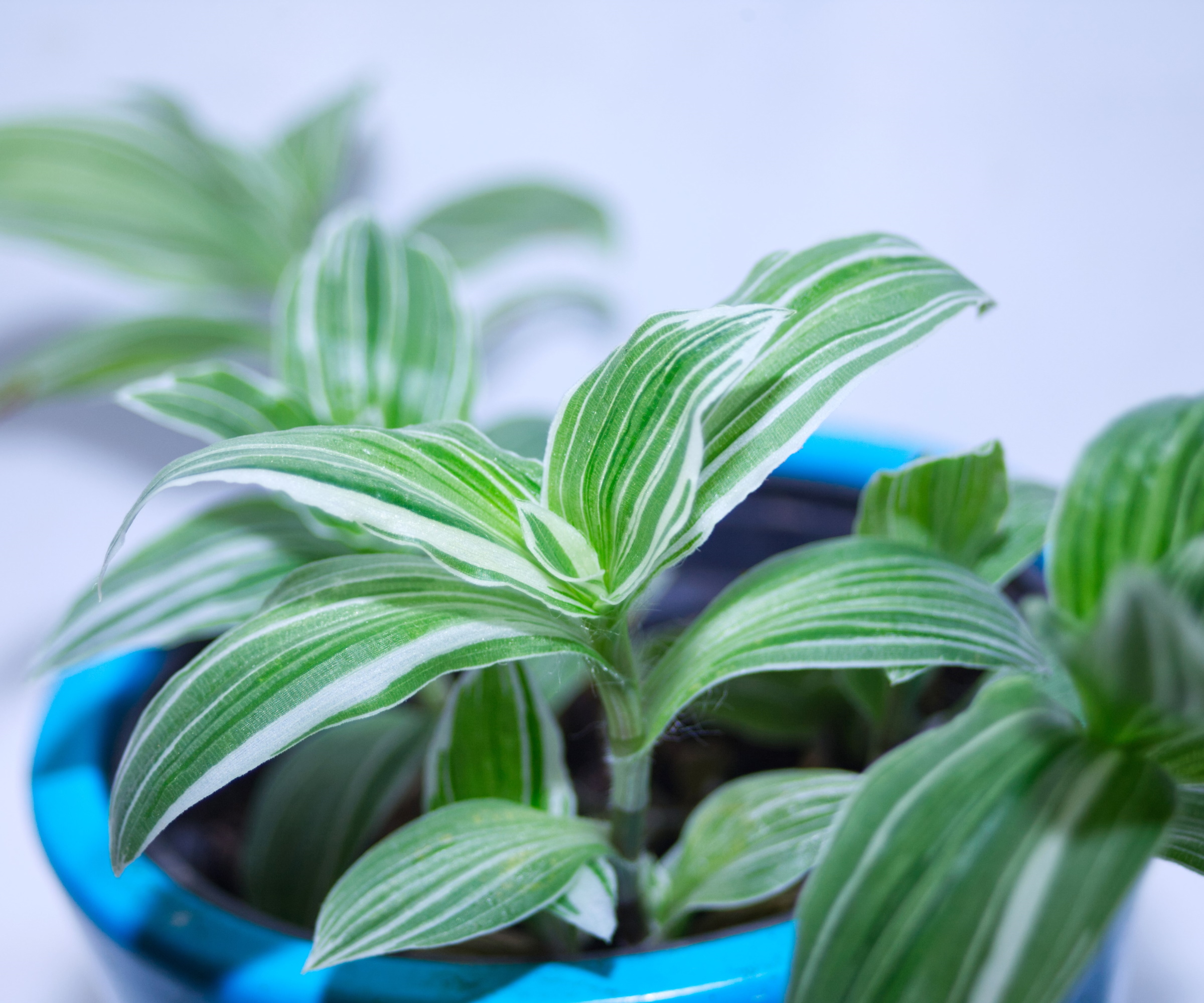
Regular and consistent watering is essential with indoor plants. 'Tradescantia plants prefer to stay moist,' says Val. 'I don't like letting mine dry out and typically use a moisture meter to check their moisture levels - so when they hit about a 4 - 5 on the meter, I water them.'
Moisture meters, such as this one from Walmart, can be a great help in assessing the moisture levels in your soil, particularly if you are new to indoor gardening.
'I find that they don't like dry conditions,' Val says. 'I notice more browning on leaves when this happens.' Grouping some plants can help, increasing the localized humidity. Val recommends doing so in 'a long planter, with a variety of plants in different colors.'
3. Plan to fertilize monthly during growing period
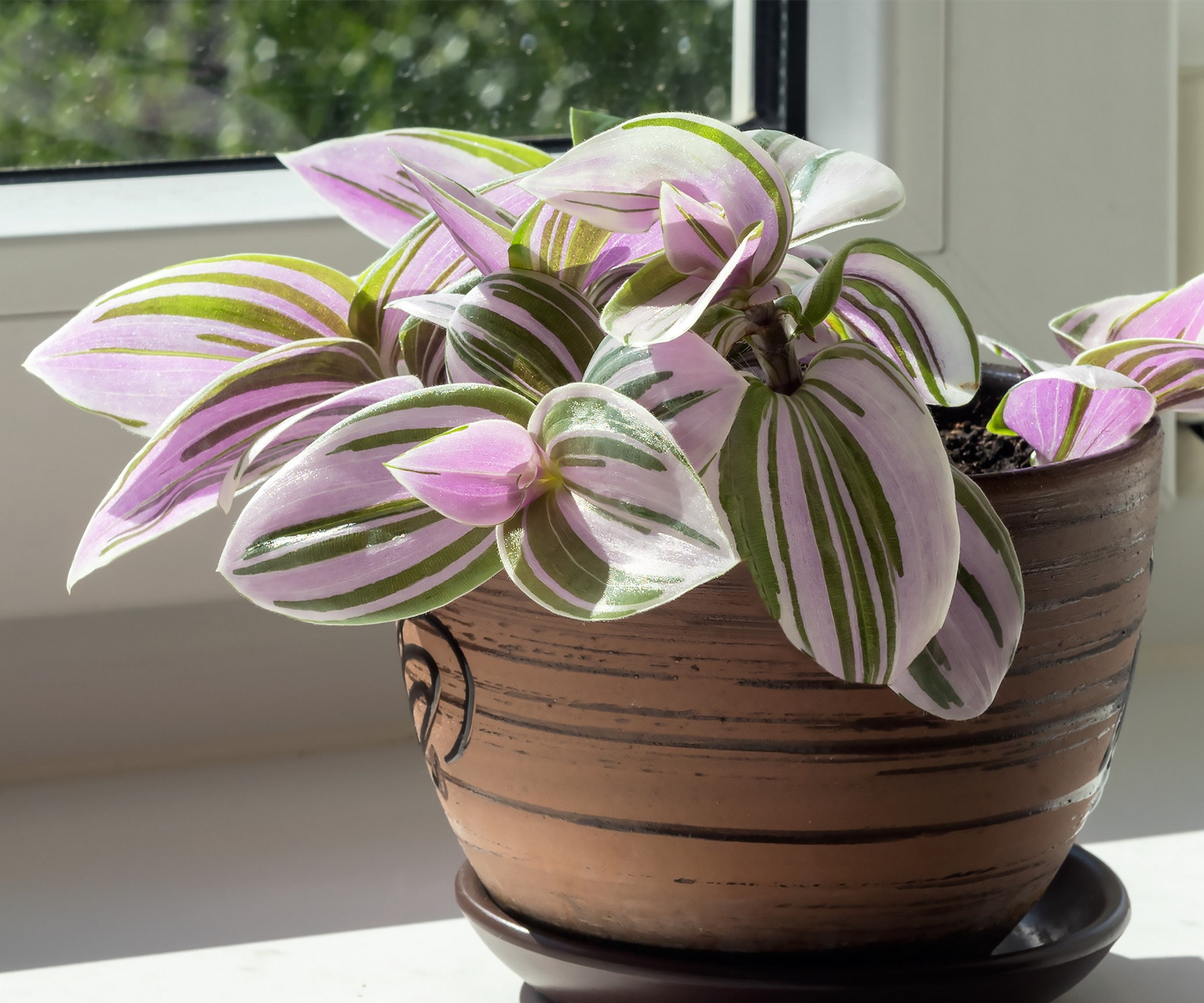
During the growing season, from spring through to fall, it is recommended that you fertilize your tradescantia plant every month, using a feed intended for indoor plants, such as this fertilizer from Walmart.
'Fertilize your tradescantia regularly with a foliage-focused fertilizer, look for a 3-1-2 ratio, during the growing season,' says Jeanie Psomas, plant expert and owner of The Plant Lady: San Francisco.
Jeanie also advises checking on the quality of your soil, as anything too free draining will mean that water, and nutrients, wash away all too quickly. 'I recommend potting them into a 60/40 mix of water-retentive media, like coco coir, and drainage material, like perlite,' says Jeanie.

Jeanie Psomas owns The Plant Lady: San Francisco, an indoor plant shop located in San Francisco, California which caters to collectors and hobbyists alike. With a strong emphasis on plant science and education, Jeannie's philosophy is that anyone can grow gorgeous plants indoors.
4. Prune when required - but not during the summer
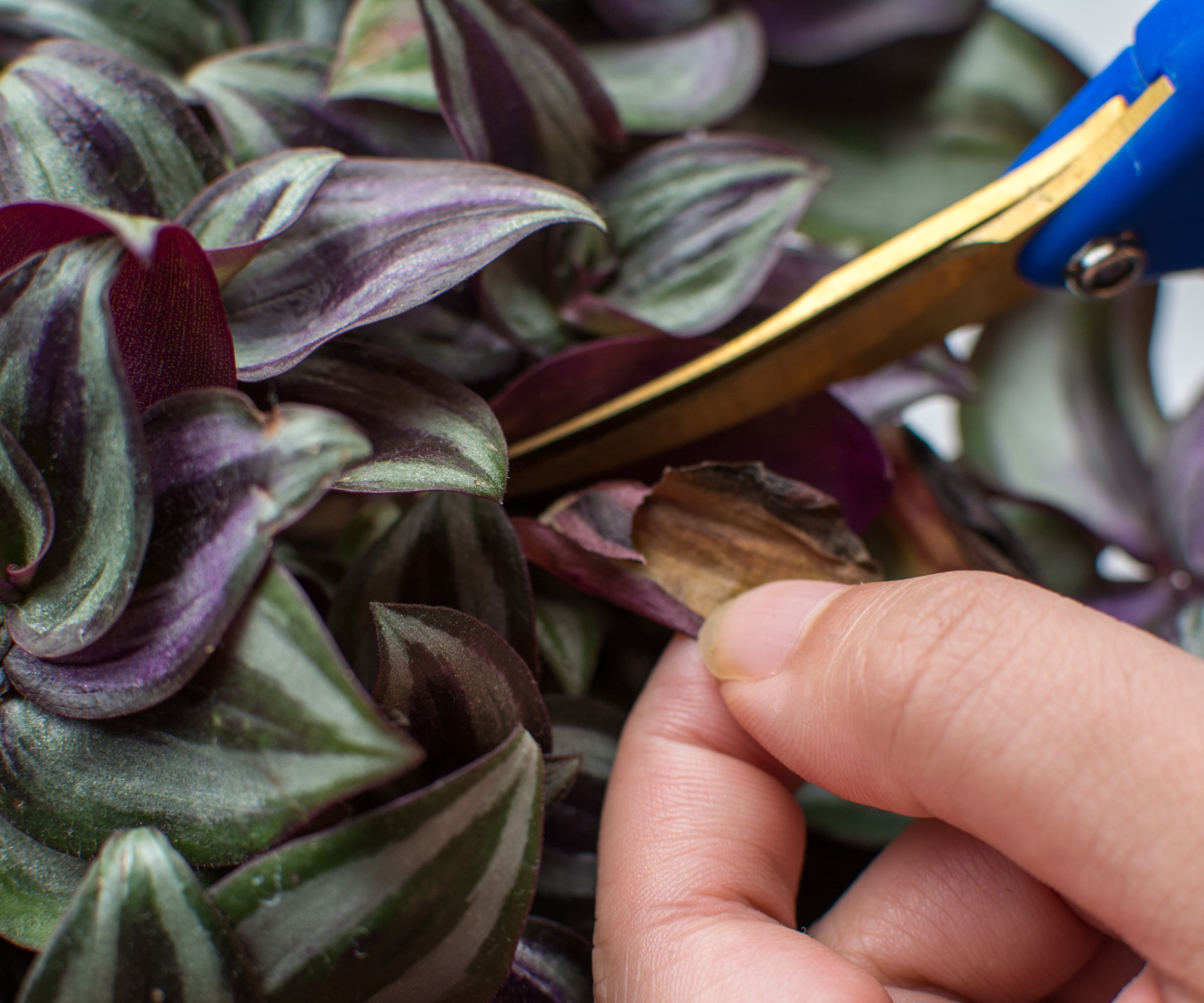
Tradescantia plants benefit from regular pruning to maintain their shape and encourage healthy growth and a bushy habit. Regularly pinching off the tips of the stems will also help to promote side shoots and bushy growth.
'Prune your tradescantia regularly to keep it bushy and full,' says Jeanie. It is best to carefully trim longer stems as well as any stems that show signs of damage or disease.
'The healthy clippings that you take can then be placed in a jar of water,' Jeanie continues. 'After a few weeks, your clippings will have grown roots, and you can plant them right back into your container or give them as gifts to friends.'
Avoid pruning in the summer months, as 'from May to September you may see small flowers announce themselves on the tips of the vines,' Jeanie says. 'This is an indication that the plants are happy.'
FAQs
Are tradescantia susceptible to pests?
Despite being a low-maintenance plant, tradescantia plants can be susceptible to pests, including spider mites and aphids. It is recommended that you inspect your indoor plants on a regular basis, looking for signs of infestation. Following this, you can treat your plant. Neem oil is one such product that can help keep these pests at bay.
Tradescantia can add interest and impact to any room in the home. As resilient and adaptable plants, they are a great option for those looking to add something interesting and unusual to their indoor plant collection. Plus, it's easy to propagate tradescantia plants.
Consider also other vibrant plant options, for example, plants with variegated leaves, that can also add something unique to your indoor garden.
Sign up to the Homes & Gardens newsletter
Design expertise in your inbox – from inspiring decorating ideas and beautiful celebrity homes to practical gardening advice and shopping round-ups.

Thomas is a Content Editor within the Gardens Team at Homes and Gardens. He has worked as a professional gardener for both public spaces and private estates, specializing in productive gardening, growing food and flowers. Trained in Horticulture at the Garden Museum, he has written on gardening and garden history for various publications, including The English Garden, Gardens Illustrated, Hortus, The London Gardener and Bloom. He has co-authored a Lonely Planet travel book, The Tree Atlas, due out in 2024.
-
 How to grow crepe myrtle in pots – and transform even the smallest of yards with dazzling flowers this summer
How to grow crepe myrtle in pots – and transform even the smallest of yards with dazzling flowers this summerGrowing crepe myrtles in pots will inject splashes of brilliant color into your outside space
By Thomas Rutter Published
-
 I've spent over 200 hours testing vacuums and swear by my two Dysons – this is how I properly clean a Dyson vacuum filter for longer-lasting appliances
I've spent over 200 hours testing vacuums and swear by my two Dysons – this is how I properly clean a Dyson vacuum filter for longer-lasting appliancesYour Dyson vacuum will last much longer and clean at its best
By Dan Fauzi Published